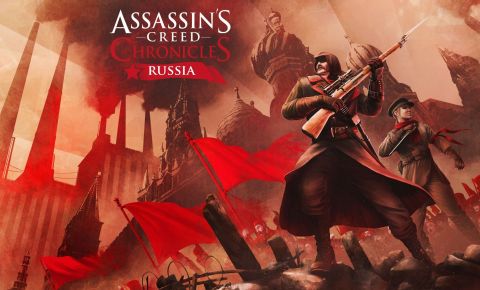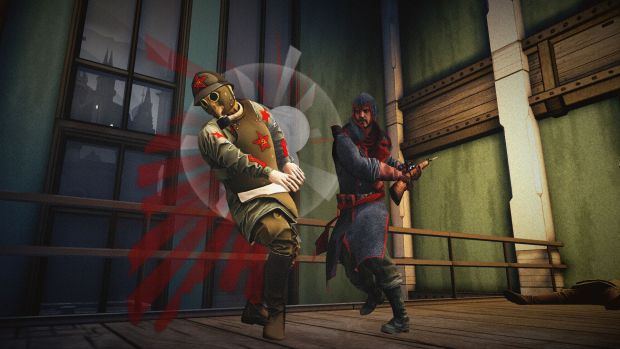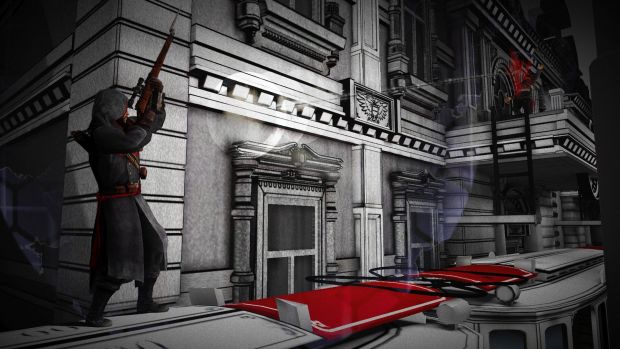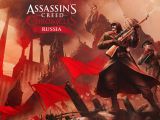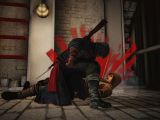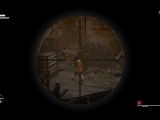The Assassin’s Creed series has gone through a roller coaster ride of sorts in recent years, alternating between solid installments like Black Flag and ambitious yet bug-ridden experiences like Unity. Last fall, the series went back to its roots and found solid footing with the pretty good Syndicate, and in the meantime, publisher Ubisoft tapped independent studio Climax to produce the Chronicles trilogy, a set of 2.5D side-scrolling adventures set in different time periods but with the classic focus on Assassins vs. Templars.
Unfortunately for fans, the first two installments, Assassin’s Creed Chronicles: China and India, haven’t exactly been the best of experiences, taking great premises and combining them with mediocre or somewhat annoying gameplay mechanics.
The final chapter in the trilogy - Russia - has just appeared, just a month after India, to little fanfare. Promising a very interesting historical period, that of the Bolshevik revolution, not to mention a different main character, in the form of Nikolai Orelov, whom fans remember from the Assassin’s Creed: The Fall comic series, the new game seems like a high note for the Chronicles experience.
Does it manage to actually live up to its potential or should the proletariat wrestle control of the series from Ubisoft’s bourgeois hands? Let’s find out.
Story
As mentioned above, Assassin’s Creed fans should already be familiar with Nikolai Orelov, the protagonist of Russia, as he was already the star of a short comic book series released several years ago. In this new installment, Orelov plays the grizzled old veteran role who embarks on a final mission before retreating from the Assassin brotherhood and Russia as a whole, due to the bloody revolution.
The final mission, as you can imagine, proves to be quite complex and much more challenging than anticipated. While at first he needs to track down an object of interest, he soon partners up with Princess Anastasia in order to stop the Templar menace that’s trying to take advantage of the civil unrest and the Bolshevik movement.
While the historical period has a lot of potential, it’s not used all that much, providing just a static backdrop for yet another clash between Assassins and Templars over a piece of Eden. The plot is decent and has some interesting high points, but just like China or India, it ultimately feels forgettable and doesn’t provide that much more insight into the lore of the series overall. Not even the Animus database entries are that interesting, as the tongue-in-cheek tone that’s present in the full-fledged Assassin’s Creed games is missing.
The story moments are once again present just at the beginning and end of your stages, and the acting feels a bit lackluster. There are also some cliché Russian accents, especially when it comes to guards, so it’s hard to take everything seriously.
Gameplay
Assassin’s Creed Chronicles: Russia doesn’t really stray from the trilogy’s already-established gameplay recipe, retaining most of the core mechanics, but it does come up with a few interesting additions that make it more exciting to play than its predecessors.
First up, the platforming and exploration mechanics are largely the same. They work relatively well, but once again, in the timed sections, which are heavily scripted, you’ll grow frustrated with some of the imprecise jumps and the poor collision detection. Instead of feeling like tense, exciting moments, these timed sequences feature a lot of trial and error and just wear you down to the point of throwing the controller on the ground. While I understand their role, which is to alternate the pace of the game, their overall design is confusing, to say the least, and instead of feeling victorious at the end of such a stage, you’re just happy it’s finally over.
Combat, once again, is heavily geared towards a stealth approach. You not only get more points when you’re sneaking around, but Nikolai’s low health makes him almost powerless against multiple foes who’ve already spotted him. Things aren’t as bad as in China or India, as his trusty rifle allows you to shoot enemies from a distance and make some of the sections easier to traverse. Using your regular attacks, however, is really hard to pull off.
There are also special sniper segments, in which the game shifts its view and lets you use a sniper rifle to take out foes from a larger distance, most of the times in order to help Anastasia get through a tricky section. These are, once again, pretty scripted, so don’t expect anything that exciting.
Things get much more interesting, however, during the moments in which you can control Anastasia. Without spoiling anything major, she can employ a few different tricks, offering a welcome change of pace from Nikolai and turning her sequences into standout moments for the whole trilogy.
Enemies rely on mostly the same archetypes seen in previous titles, only, this time, there are way more rifle-wielders, which makes sense given the time period and the prevalence of guns during that troubled time. Their vision cones, however, are a bit more erratic this time, so expect to get spotted in surprising times when trying to sneak around. This, unfortunately, mostly turns into an automatic death for the player, so you might want to double-check the behavior of your opponents and their vision games before trying to sneak past.
Fortunately, the game does add a few new elements to help you sneak around and distract foes. As a first, you can use telephones in bigger buildings with multiple floors so that enemies are prompted to investigate the ringing device. Nikolai can also use his brand new grapple gun to open up vents and crawl through them, like a Russian Gordon Freeman, thereby eluding groups of foes. In addition to these things, traditional distractions, like the whistle, make a comeback.
Levels are a bit more varied than in previous installments and really like to alternate between the two main planes of action. It’s a bit easier to spot elements of the environment with which you can interact than in India, for example, as the color scheme is dominated by gray and red. Expect the usual ladders, beams, or roofs that can be used to sneak past foes. However, once you progress through the surprisingly lengthy story, enemies get more numerous and always check the regular hiding spots.
Besides the regular campaign mode, Assassin’s Creed Chronicles: Russia also includes the now-traditional Challenge Rooms that task players with completing basic objectives, like assassinations or gathering various elements scattered throughout the levels. These are quite varied, and the minimalistic design is a welcome change of pace from the regular story experience. However, just like with the regular campaign, some are better than others, and there are a few that are downright frustrating to even try to complete.
Visuals and sound
As mentioned above, Assassin’s Creed Chronicles: Russia chooses to represent 1917 Russia with a stark contrast between the gray of the buildings and the crimson red that evokes the growing Bolshevik movement that grasped the whole country. Just like with China or India, the design is a success, delighting the eyes with plenty of great moments.
The animated comic book-style cut scenes are also quite impressive, incorporating elements from the communist propaganda posters. Unfortunately, during the many different deaths and desynchronizations, you’ll notice the texture loading that’s a bit slow in some situations, a now trademark downside of using the Unreal Engine 3.
The soundtrack is pretty good, managing to depict the tumultuous time with an orchestral mix that incorporates traditional Russian classical music and the more patriotic chants that represented the Bolshevik movement. The voice acting, unfortunately, is pretty lackluster and, at least when it comes to the guards, filled with cliché Russian accents and dull tones.
The Good
- Great contrasting visual style
- Varied levels and interesting new mechanics
- Lots of story and challenge missions
- Fun Anastasia moments
The Bad
- Frustrating timed events
- Erratic enemy behavior
- Clunky combat
 14 DAY TRIAL //
14 DAY TRIAL // 